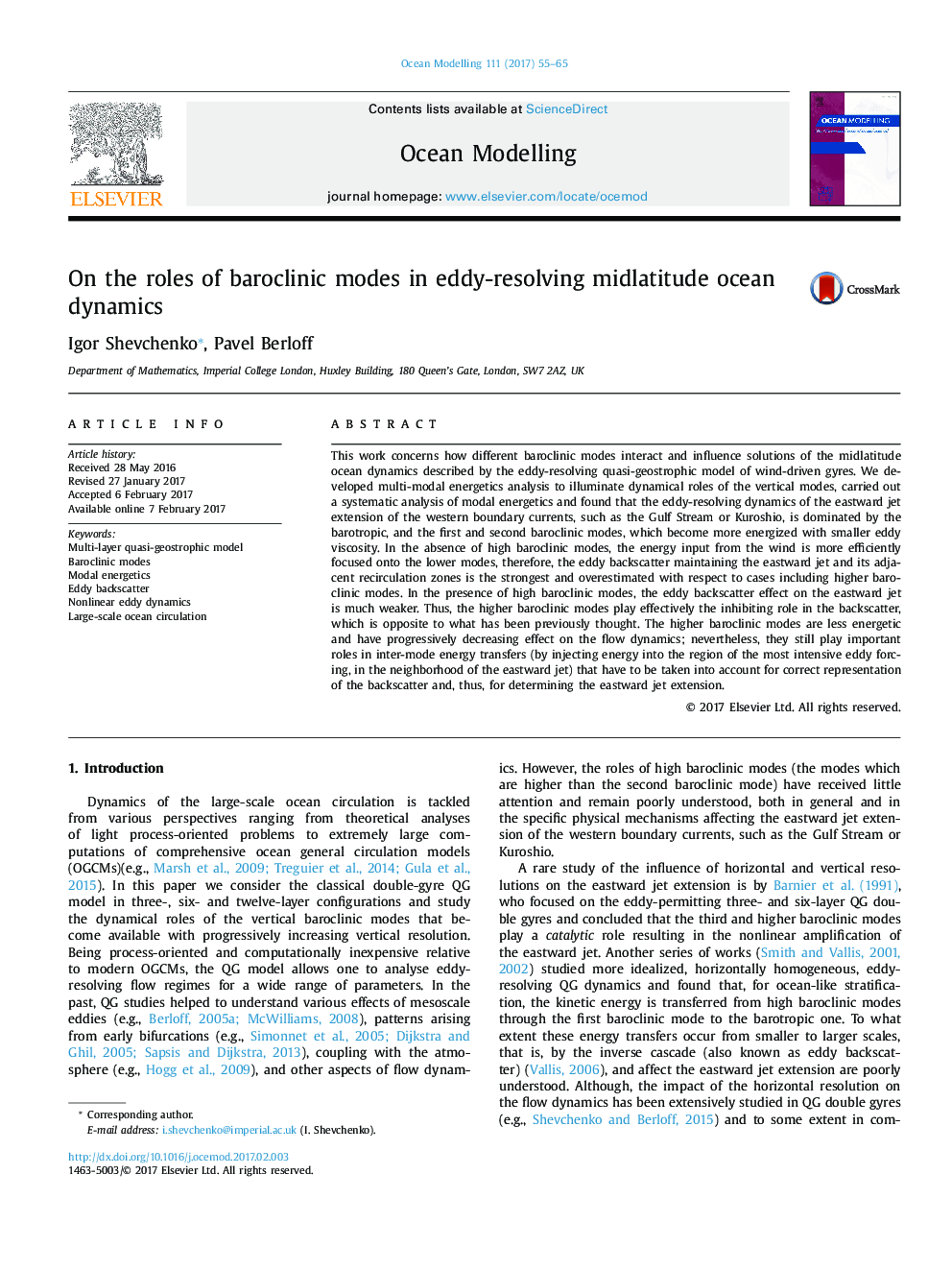| Article ID | Journal | Published Year | Pages | File Type |
|---|---|---|---|---|
| 5766391 | Ocean Modelling | 2017 | 11 Pages |
â¢Barotropic, first and second baroclinic modes determine the bulk of the eastward jet dynamics.â¢High baroclinic modes inhibit the eastward jet.â¢No high baroclinic modes yields an overestimated eastward jet.â¢Higher baroclinic modes have progressively decreasing effect on the flow dynamics.
This work concerns how different baroclinic modes interact and influence solutions of the midlatitude ocean dynamics described by the eddy-resolving quasi-geostrophic model of wind-driven gyres. We developed multi-modal energetics analysis to illuminate dynamical roles of the vertical modes, carried out a systematic analysis of modal energetics and found that the eddy-resolving dynamics of the eastward jet extension of the western boundary currents, such as the Gulf Stream or Kuroshio, is dominated by the barotropic, and the first and second baroclinic modes, which become more energized with smaller eddy viscosity. In the absence of high baroclinic modes, the energy input from the wind is more efficiently focused onto the lower modes, therefore, the eddy backscatter maintaining the eastward jet and its adjacent recirculation zones is the strongest and overestimated with respect to cases including higher baroclinic modes. In the presence of high baroclinic modes, the eddy backscatter effect on the eastward jet is much weaker. Thus, the higher baroclinic modes play effectively the inhibiting role in the backscatter, which is opposite to what has been previously thought. The higher baroclinic modes are less energetic and have progressively decreasing effect on the flow dynamics; nevertheless, they still play important roles in inter-mode energy transfers (by injecting energy into the region of the most intensive eddy forcing, in the neighborhood of the eastward jet) that have to be taken into account for correct representation of the backscatter and, thus, for determining the eastward jet extension.
